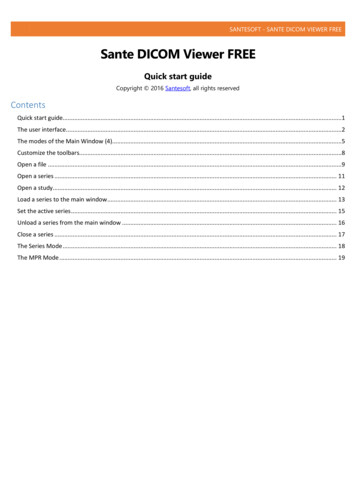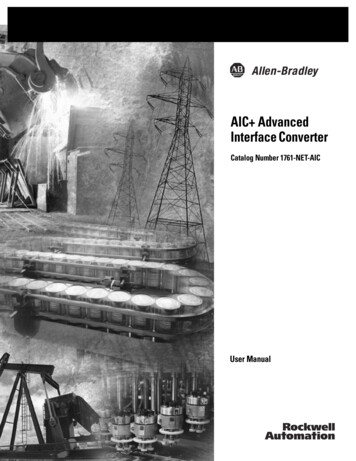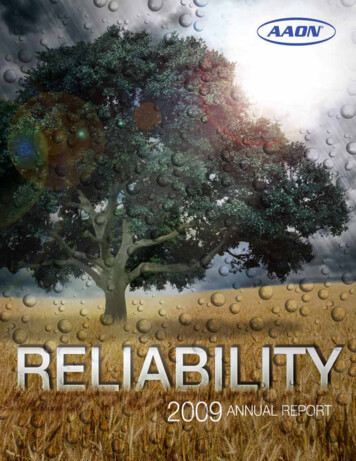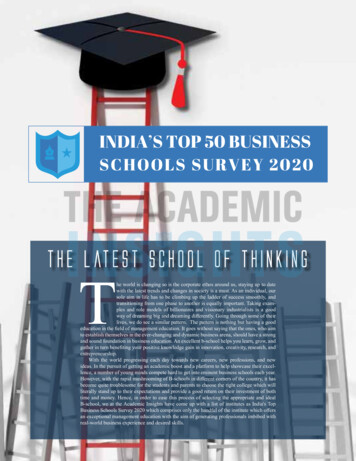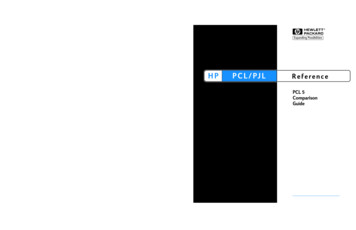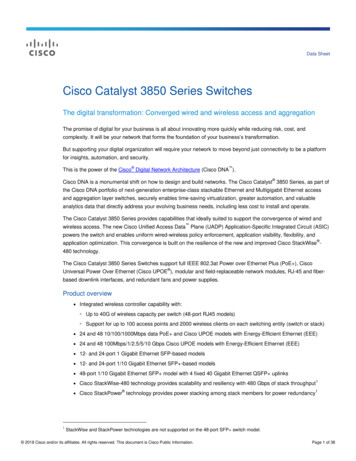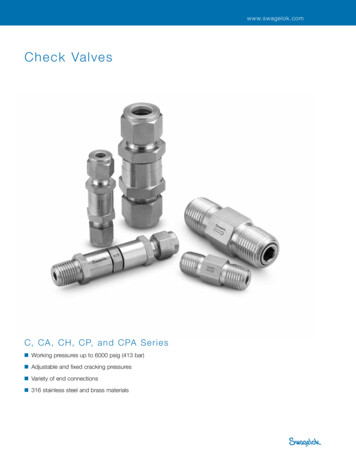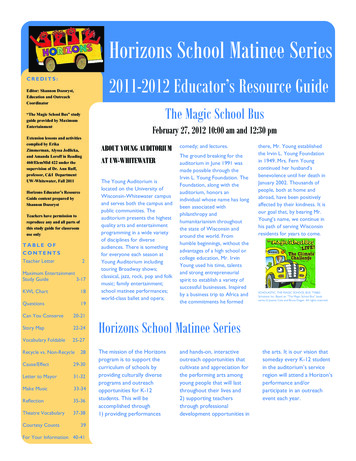
Transcription
Horizons School Matinee Series2011-2012 Educator’s Resource GuideCREDITS:Editor: Shannon Dozoryst,Education and OutreachCoordinatorThe Magic School Bus“The Magic School Bus” studyguide provided by MaximumEntertainmentFebruary 27, 2012 10:00 am and 12:30 pmExtension lessons and activitiescomplied by ErikaZimmerman, Alyssa Jedlicka,and Amanda Loroff in Reading460/ElemMid 422 under thesupervision of Dr. Ann Ruff,professor, C&I DepartmentUW-Whitewater, Fall 2011ABOUT YOUNG AUDITORIUMAT UW-WHITEWATERHorizons Educator’s ResourceGuide content prepared byShannon DozorystTeachers have permission toreproduce any and all parts ofthis study guide for classroomuse onlyTABLE OFCONTENTSTeacher Letter2Maximum EntertainmentStudy Guide3-17KWL Chart18Questions19Can You Conserve20-21Story Map22-24Vocabulary Foldable25-27Recycle vs. Non-Recycle28Cause/Effect29-30Letter to Mayor31-32Make Music33-34Reflection35-36Theatre Vocabulary37-38Courtesy Counts39For Your Information 40-41The Young Auditorium islocated on the University ofWisconsin-Whitewater campusand serves both the campus andpublic communities. Theauditorium presents the highestquality arts and entertainmentprogramming in a wide varietyof disciplines for diverseaudiences. There is somethingfor everyone each season atYoung Auditorium includingtouring Broadway shows;classical, jazz, rock, pop and folkmusic; family entertainment;school matinee performances;world-class ballet and opera;comedy; and lectures.The ground breaking for theauditorium in June 1991 wasmade possible through theIrvin L. Young Foundation. TheFoundation, along with theauditorium, honors anindividual whose name has longbeen associated withphilanthropy andhumanitarianism throughoutthe state of Wisconsin andaround the world. Fromhumble beginnings, without theadvantages of a high school orcollege education, Mr. IrvinYoung used his time, talentsand strong entrepreneurialspirit to establish a variety ofsuccessful businesses. Inspiredby a business trip to Africa andthe commitments he formedthere, Mr. Young establishedthe Irvin L. Young Foundationin 1949. Mrs. Fern Youngcontinued her husband’sbenevolence until her death inJanuary 2002. Thousands ofpeople, both at home andabroad, have been positivelyaffected by their kindness. It isour goal that, by bearing Mr.Young’s name, we continue inhis path of serving Wisconsinresidents for years to come.SCHOLASTIC, THE MAGIC SCHOOL BUS & Scholastic Inc. Based on “The Magic School Bus” bookseries Joanna Cole and Bruce Degen. All rights reserved.Horizons School Matinee SeriesThe mission of the Horizonsprogram is to support thecurriculum of schools byproviding culturally diverseprograms and outreachopportunities for K-12students. This will beaccomplished through1) providing performancesand hands-on, interactiveoutreach opportunities thatcultivate and appreciation forthe performing arts amongyoung people that will lastthroughout their lives and2) supporting teachersthrough professionaldevelopment opportunities inthe arts. It is our vision thatsomeday every K-12 studentin the auditorium’s serviceregion will attend a Horizon’sperformance and/orparticipate in an outreachevent each year.
PAGE2Horizons School Matinee SeriesDear Teachers,Thank you for choosing to attend a Horizons School Matinee Series performance at YoungAuditorium. We strive to provide programs that enhance your curriculum and allow you to explorearts integration in the classroom with your students. To help meet that goal, we offer a resource guidefor each performance. This resource guide has been designed to help you prepare your students withbefore activities that help them engage in the performance and after activities that encourage them toevaluate the performance and make relevant personal and academic connections. Within the guideyou will find a variety of activities that can be used to enhance the core subject areas as well as thecreative arts. Wisconsin Model Academic Standards are listed for each lesson to help you link themto your existing curriculum. The materials in this guide reflect the grade range recommended by theperforming arts group. As teachers, you know best what the needs and abilities of your students are;therefore, please select and/or adapt any of the material to best meet the needs of your particulargroup of students.It is also part of our mission to provide teachers with support in the efforts to integrate arts in theircurriculum and bring teaching artists into the classroom to work directly with students. Please visitour website www.uww.edu/youngauditorium for more information about Reaching New Horizons:Arts Integration in the Classroom,, our new professional development series for teachers, and theHorizons Outreach Program.As you prepare for your visit to the Young Auditorium, please do not hesitate to contact our staff. Weare happy to assist you in making your trip a positive and memorable experience for your students.Thank you for your support!Young Auditorium
Study Guide forThe Magic School Bus Live!The Climate ChallengePresented by Maximum Entertainmentin Association with Bay Area Children’s Theatreand Oregon Children’s Theatre
Table of ContentsGo Green with Your ClassAbout The PlayPre-Show Discussion Questions andActivitiesPost-Show Discussion Questions andActivitiesMagic School Bus Through theCurriculum
Go Green with Your ClassT help reverse the effects of climateTochange on our planet, we all have towork together because “tiny stuff matters.”1. RECYCLE-Start a schoolwide recycling program for paper, glass andaluminum. If your school already recycles, start a campaign reminding your school community that itis important to re-use as well as recycle. Use both sides of paper,create art projects out of used items like egg crates, plastic waterbottles and grocery bags.2. LETTER WRITING-Write letters or send emails to your congressrepresentative, city council member, mayor, governor and thePresident of the United States asking him or her to support measures that help the earth.3. WWALK or RIDE- Start a “walk-or-ride to school day” once perweek when everyone in school walks, rides a bike, takes the busor carpools.4. EDUCATE-Write and perform a play about the environment.5. LOCAL PRODUCE-Take a field trip to a farm or farmer’s market to learn about how crops go from the field to the stores in yourarea.6. TURN OFF LIGHTS-Appoint a designated “energy-saver”whose job is to turn off the classroom lights when the class leavesfor recess or enrichment.
Peinc nguAu ludin ins li Funstrali g So ve on FacWho makes the show happen?a,uthma t:bcie ut t Am nyThe Director is Tracy. Tracy iss li heceves ma rica ontiin charge of telling the actors wherejo , A neinto go on stage and how to make theirAn rity frica nts,tar ofcharacters interesting. She is the person whoctic the andmakes sure everyone is doing a good job tellinga.spethe story of the play.About This ProductionThe Actors are all of the people you see on the stage. They work together as a team to rehearse the play, memorize their lines and learn their songs. All of the actors went to schoolto learn how to perform.The Playwright and Composer is Scott. Scott writes all of the music for the show and all ofthw words tat the actors speak. He also writes the lyrics, or the words that the actors sing.He also writes stage directions which help the director know what the actors should be doingwhile they say their lines. Scott read the Magic School Bus book very closely to find all of themost important facts and stories.The Choreographer is Nicole. Nicole creates all of the dances in the show and then teachesthem to the actors. She works very closely with the Director and the Music Director to helptell the story of the play through movement.The Music Director is Sean. Sean teaches all of the music to the actors and helps them findthe best way to sing the songs and the harmonies. A harmony is when two people are singing different notes at the same time and when you hear them together they sound beautiful.Sean works with the Composer to make sure he is doing the best job possible with the music!The Set Designer is EmilyEmily. Emily creates the world where the actors tell the story. She imagines and draws all of the pieces that you see on the stage. For this production Emily has anextra challenge to use as many natural or recycled materials as possible.The Costume Designer is Ulises. Ulises imagines the clothes that the actors are wearing tohelp become the characters. He draws and then sews the clothing.The Projection Designer is Lloyd. Lloyd chose all of the pictures and movies that wereplayed during the show. Lloyd works with Scott, the playwright and Tracy, the directorto decide which kind of picture goes where in the script.
Pre-Show Classroom Activities and DiscussionsDiscussion Questions:What is theatre? What is the difference between live theatre and a movie ortelevision?Imagine you are an actor on stage.What kind of part would you like to play?How would you like the audience to respond to your performance?Why do we applaud at the end of a performance?Class Activity: Going to See a ShowSelect four volunteers to act as “performers.” Select two volunteers to act as“stagehands.” The rest of the class will act as the “audience.”Step 1: Stagehands flash the lights in the classroom to indicate the performance is starting. And say the line “Everyone please take your seats.”Step 2: Performers enter by standing in front of the class. All of the performers sing “Twinkle Twinkle Little Star” or any other song or poem that everyonein the class knows.Step 3: The Audience applauds at the conclusion of the performance.Step 4: The Performers bow.Step 5: The Stagehands flicker the lights to indicate the end of the show.Step 6: Rotate participants.
Post-Show Classroom Activities and DiscussionsDiscussion Questions:What was the play about?Were there differences betweenthe story in the book and thestory in the play?What parts of the play were themost exciting?Which character did you enjoythe most? Why?Why do you think the director chose to use projections (giant pictures) alongwith liveactors?Writing and Drawing Activity:Each student writes a letter to Ms. Frizzle.Dear Ms. Frizzle,My favorite part of the play wasWhile watching your play I feltbecauseI have drdrawn a picture of the scene whenIf I could be in your play, I would like to play the part ofbecause .After seeing your play, I plan toto do my part to GO GREEN!Sincerely,After writing the letter, students can illustrate a scene from the play. We love hearing from our audiences! If you would like, please send these letters to Bay AreaChildren’s Theatre, 6114 La Salle Avenue, #431, Oakland, CA 94611. Includeyour return address and your class will receive a note back from the actors!
Vocabulary: Word Picture MatchDraw a line between the picture and the word.EARTHRAINSUNMAGIC SCHOOL BUSWINDTREE
Math: Word Problems1. If Ms. Frizzle’s class has collected 99 plastic bottles to recycle and Arnold adds one more, how many bottles will the class have collected?2. Wanda walks to school every day. So far, there have been 149 daysof school. Today Wanda walked to school one more time. How manytimes has Wanda walked to school?3. Arnold decides to plant a garden. It takes him one minute to plantone seedling. If he does not take a break, how many seedlings will heplant in ten minutes?4. Liz wants to learn some new dance moves. Liz studies very hard andlearns 49 new dance moves. Keesha wants Liz to know 60 dance movesfor the big show. How many more dance moves does Liz have to learn?5. Carlos writes one email to the Mayor asking for a windmill for theirtown, he writes one email to his Senator asking her to vote yes on a billto help the environment and he writes one email to the President of theUnited States about the importance of conservation. Keesha thinks it is agood idea for her to write the same number of emails. How many emailsdo Keesha and Carlos send all together?BONUS QUESTIONSMs. Frizzle learns that the Magic School Bus uses one gallon of bio-dieselfuel every time she drives 10 miles. If the arctic is 1,000 miles away, howmany gallons of bio-diesel fuel will she need to make the trip?
Language: Word LGOFKNAIKGRALOSTKWCIMVJH
VocabularyFill in the sentences below with the following vocabularywords (each word is used only once):GlaciersClimateRecycleFossil FuelGlobal WarmingSolar Panels1. When we put gasoline in our car we are using a tomake the engine run.2. Over the last 100 years, the temperature on earth has goneup an average of one degree because of .3. The of an area is its usual weather. For instance,the usual weather is Arizona is hot, but the usual weather in Oregon is cooler.4. If you visit the Arctic, you will see which are giantareas of frozen water.5. One way to help the earth is to use which use thesuns rays to create energy.6. A great project for schools and kids is to collect cans, bottles,and paper to so that they can be re-used.
Reading for DetailRead the following section from “The MagicSchool Bus and the Climate Challenge” byJoanna Cole and Bruce DegenHave you heard about our teacher, Ms. Frizzle? Almostevery day, something weird halppens in her class. Forexample, take the day we started to study global warming. We were going to put on a play about Earth and allthe changes that are happening. The Friz had broughta book from home, and we were using the pictures tohelp us paint the scenerscenery.“Ms. Frizzle’s book is kind of old,” said Tim. “It came out before things really started heatingup.”“I’ll go online to get new pictures,”” said WWanda.”Shehe headed ffor the computer but Ms. Frizzle was already out the door. “Come on class,” shecalled.“Bring my book, please.”Before you could say “North Pole,” the Friz herded us onto the bus. She pushed a few buttonsand pulled a few levers. Then we were on our way to the Arctic Sea--a place with a completelydifferent climate.1. Every day in Ms. Frizzle’s class something happens that is:a) normalc) weirdb) boringd) ugly2. The class was studyinga) mathb) global warmingc) giant spidersd) Paul Revere3. What is Tim’s complaint about Ms. Frizzle’s book?a) It is too oldc) It is too longb) It does not have pictures d) It is confusing4. What tool is Wanda going to use find new pictures?a) newspaperc) text bookb) coloring bookd) computer5. Where did the class go with Ms. Frizzle?a) Arctic Seac) Cleveland, Ohiob) Tropical Rain Forestd) Wanda’s House
Art: IllustrationThe Magic School Bus Series tellsMs. Frizzle’s stories through bothwords and illustration. Illustrationare the pictures that are next to thewords.Step 1: Select a story that the class is all reading together.Step 2: Teacher reads aloud one scene from the story.Step 3: Using markers, crayons, or colored pencils, all of the students usetheir imagination to illustrate the same scene.Step 4: Each student describes what is in their drawing to a partner.Drama: Acting out a StoryIn the play “Magic School Bus Live! TheClimate Challenge,” the actors took a story which was originally a book and actedit out.Step 1: Teacher reads a story aloud to the class.Step 2: As a class, brainstorm the characters in the story and the settings-locations in the story.Step 3: As a class, determine the plot--events in order with a clear beginning, middle and end.Step 4: Teacher breaks up the story into small segments and assigns eachsegment to a group of students.Step 5: Students must create a tableaux (frozen picture that tells a story)of the moment in the story.Step 6: All groups show their tableaux in front of the class in the order ofthe story.Vocabulary: Illustration, Plot, Tableaux, Character, Setting
Geography: ClimateUsing the tools of the classroom andlibrary, students in groups must answer the following questions:Group 1-Glaciers1. What is a Glacier?2. What are three animals that might live near a Glacier?3. What is the climate of a Glacier? What kind of clothing would you wear if youvisited?4. What is the name of one country that has Glaciers?Group 2-Rain Forest1. What is a Rain Forest?2. What are three animals that might livein a Rain Forest?3. What is the climate of a Rain Forest?What kind of clothing would you wear ifyou visited one?4. Find two different countries that haveRain Forests. What are the names of thosecountries? Find them on a map.Group 3-Desert1. What is a Desert?2. What are three animals that might livein a Desert?3. What is the climate of a Desert? Whatkind of clothing would you wear if you visited a Desert?4. Find two different countries that have Deserts? What are the names of those countries? Find them on a map.
Here are more ideas for Magic School Bus related activities for allgrade levels.Lower Elementary:-Recycled Craft Day-Decorate cloth shopping bags-Learn about glaciers by making ice and then melting it.Sci20 entis,00 ts b Fu0 a eli n Fnd eve act25 the :ing ,00 re aon 0 Po reea lar betwrth. Bear eens liv-Middle Elementary:-Act out the story of one of Ms. Frizzle’s Journeys using tableaux-Write a class book with energy saving ideas-Paint a “Go Green” mural at your school site-Keep an energy journal. Write down energy wasted and energy savedin every day activitiesUpper Elementary:-Write and illustrate your own story about a magical trip to a far awayland-Organize a class potluck using only local food-Research projects on clean enery like windmills and solar panels
Answer Key for TeachersWord Problems1. 100 plastic bottles2. 150 walks to school3. 10 seedlings4. 11 dance moves5. 6 emails6. 100 gallons of bio-diesel fuelVocabulary1. Fossil Fuel2. Global Warming3. Climate4. Glaciers5. Solar Panels6. RecycleReading for Detail1. c) weird2. b) global warming3. a) It is too old4. d) computer5. a) Arctic Sea
PAGEActivity: Before and After Reading Book; During PlayKWL chartGrade Range: 2-4WI State Standard(s) Addressed:C.4.2 Use the science content being learned to ask questions, plan investigations, make observations, make predictions, and offer explanationsCurriculum Connections: Reading/Language Arts and scienceSources: nizers/kwl-lines.pdfObjectivesBefore reading the book The Magic School Bus and the Climate Challenge, students will begin to fill out a KWL chartabout what they know about climate change and what they want to know. After reading the book and seeing the playstudents will complete the rest of the worksheet.Materials:Book- The Magic School Bus and the Climate Challenge By Joanna Cole and Bruce DegenKWL worksheetProcedureBefore reading the book, The Magic School Bus and the Climate Challenge by Joanna Cole and Bruce Degen passout the KWL worksheets for the students.Go over with the students what each section of the worksheet means and provide examples for them.Give the students about 10 minutes to work individually on filling out the K and W of the worksheet on what theywant to know about climate change.Then, go over some examples that the students gave as a class and allow other students time to add to their chart.Read the book with the students.After the book is finished, give the students some more time to fill in the L portion of the worksheet.As a class, review some of the examples that the students provided.18
PAGE19Activity: After Reading the BookDiscussion QuestionsGrade Range: 2-4WI State Standard(s) Addressed:RL.4.1. Refer to details and examples in a text when explaining what the text says explicitly and when drawing inferencesfrom the text.Curriculum Connections: Reading/Language ArtsSources: sion/printable/48398.htmlObjectives:Students will demonstrate an understanding of asking and answering questions before, during, and after reading to improve reading comprehension.Materials:Book - The Magic School Bus and the Climate Challenge by Joanna Cole and Bruce Degen.Procedure:Ask and answer before reading questions.What story clues are in the titles and pictures?What will the main character(s) need or want?Is this story real or make believe? How do you know?Why do you want to read this story?What will you learn?How do you picture the setting?Read The Magic School Bus and the Climate Challenge by Joanna Cole and Bruce Degen and ask during reading questions.What will happen next in the story?How do you feel about the main character?Does the story make sense?How will the story most likely end?How does this story or text remind you of your life?Ask and answer after reading questions.How did the story make you feel?What did you like/dislike about the story?What is the main part of the story?How have your feelings about the character changed?How are the character’s feelings or actions different at the end of the story?What is the author trying to teach you?
PAGEActivity: After Reading the Book“Can You Conserve?”Grade Range: 2-4Time Frame: 40-45 minutesWI State Standard(s) AddressedB.4.1 Use encyclopedias, source books, texts, computers, teachers, parents, other adults, journals, popular press, andvarious other sources, to help answer science-related questions and plan investigationsCurriculum Connections: ScienceSources: NoneObjectivesGiven a large poster board and materials, students will show their understanding of ways to conserve energy bycreating a poster.MaterialsPoster BoardGlue/TapeMarkers/Colored Pencils/CrayonsScissorsMagazines that students can cut out ofExample of PosterProcedureAfter reading the book, students will be asked to produce their own poster that reflects ways in which toconserve energy.The students will be allowed the entire class period to work on the posters.The object of the poster is to inform others of different ways to conserve energy. Some examples mayinclude: carpooling, riding your bike, turning off the lights when you leave the room, turning off thewater when you brush your teeth, and using reusable bags when shopping.The students must have 7-10 different ways to conserve energy. They can use any materials in theclassroom to represent them.The posters will be discussed as a class when all students are finished. Each student will be given time toshow their work.The posters will be displayed in the classroom.ExtensionIf students finish early, encourage them to add more examples of conserving energy. They could also write a fewsentences under each explaining them.20
PAGE21
PAGEActivity: After Reading the BookStory MapGrade Range: 2-4WI State Standard(s) Addressed:RL.4.3. Describe in depth a character, setting, or event in a story or drama, drawing on specific details in the text(e.g., a character’s thoughts, words, or actions).Curriculum Connections: Reading/Language ArtsSources: bjectives:By completing the story map template, students will demonstrate an understanding that there are series ofevents that occur during a story and describe aspects of stories; including characters, where and when theevents took place, and what happened.Materials:Book - The Magic School Bus and the Climate Challenge by Joanna Cole and Bruce DegenStory Map Template (attached)Procedure:Read The Magic School Bus and the Climate Challenge by Joanna Cole and Bruce DegenAfter reading the story, ask the students to suggest things that occurred in the story and write thesesuggestions on the board.Have students complete their own story map, leaving the suggestions on the board to help them get started.As the students are working, monitor their progress, and help by prompting them with questions.Discuss answers as a class.22
PAGE23
PAGESuggested Answers to Story MapTitle: The Magic School Bus and the Climate ChallengeAuthor: Joanna Cole and Bruce DegenSetting: Classroom, Bus-Plane around the EarthCharacters: Ms. Frizzle, Tim, Wanda, Keesha, Arnold, Dorthy Ann, Shirtly,Carlos, Phoebe, Molly, RalphieProblem: The students in Ms. Frizzle’s class need more up-to-date informationabout Global Warming to put on their play.Event 1: Paint scenery for the playEvent 2: Take Bus-Plane to Arctic Sea – observed ice meltingEvent 3: Take Bus-Plane around the Earth – observed more changesEvent 4: Ride sunbeams - observed the greenhouse effectEvent 5: Discover alternate energy sourcesEvent 6: Back at school to find ways to help and perform the playSolution: Took a trip around the Earth to observe the causes and effects of GlobalWarming24
PAGE25Activity: After Reading the BookVocabulary FoldableGrade Range: 2-4Time Frame: 40-45 minutesWI State Standard(s) Addressed:L.4.4. Determine or clarify the meaning of unknown and multiple-meaning words and phrases based on grade 4 readingand content, choosing flexibly from a range of strategies.L.4.6. Acquire and use accurately grade-appropriate general academic and domain-specific words and phrases, includingthose that signal precise actions, emotions, or states of being (e.g., quizzed, whined, stammered) and that are basicto a particular topic (e.g., wildlife, conservation, and endangered when discussing animal preservation).Curriculum Connections: Language ArtsSources (List all Internet sources used to develop the lesson or activity.)Objectives:Students will learn vocabulary related to climate change by creating a foldableMaterials:Magic School Bus and the Climate Challenge BookVocabulary List – AttachedFoldableProcedure:Create the foldable – see attached templateFoldCutLabelIntroduce vocabulary words one at a time with the use of a power point, smart board presentation, word wall, ordiscussion.Allow for students to add the definition for each vocabulary word at this time.Extension: If students finish early, encourage them to quiz each other on the terms with the use of their foldables.
PAGEFoldable TemplateHow To Construct:Fold a 8 1/2 X 11 sheet of cardstock vertically (hotdog style)On the Front cover draw 8 equal dividing lines – it may work best to already have this done for thestudentsCut the lines from the edge to the fold creating 8 flaps.On the front of the foldable or flap, students will write the vocabulary wordWhen the flap is opened the vocabulary word definition can be written on the solid backingGlobal WarmingCUTClimateGreen House EffectFossil FuelsConserveRecycleAlternative Energy26
PAGE27The Magic School Bus and the Climate ChallengeVocabulary Word ListGlobal Warming: A rise in the average temperature of the land and water on earthClimate: Usual WeatherGreenhouse Effect: When heat-trapping gases act like the glass in a greenhouseand make the earth warmerFossil Fuels: A natural fuel such as oil, coal, and natural gas that is made fromdecayed plantsConserve: Avoid WasteRecycle: Treat waste materials so they can be used againAlternative Energy: Energy from sources that do not use up natural resources
PAGEActivity: After Reading the BookRecycle vs. Non-recycleGrade Range: 2-4Time Frame: 40-45 minutesWI State Standard(s) Addressed:D.4.2 Group and/or classify objects and substances based on the properties of earth materialsCurriculum Connections: s/rasc/upload/Appendix%204.pdfObjectives:Students will be able to distinguish between recyclable and non-recyclable ecycle BinProcedure:Scatter materials on the floor so that all objects are clearly ables2. Place a recycle bin and a trashcan in the front of the classroom.3. Have students come up, one at a time, and select one object.4. Have the students place the object in the container they think it goes in.Ask the rest of the class if they agree.5. Discuss the item and whether or not the student was correct.Extension: Talk about possible ways to reuse each item before recycling or trashing it.(Example: glass jar to catch lightning bugs, Cool Whip container as a water dish for a pet,etc.)28
PAGE29Activity: After Reading the BookCause and Effect of Global WarmingGrade Range: 2-4WI State Standard(s) Addressed: RI.4.5. Describe the overall structure (e.g., chronology, comparison, cause/effect,problem/solution) of events, ideas, concepts, or information in a text or part of a text.Curriculum Connections: Reading/Language ArtsSources: graphic-organizersObjectives:By completing the cause and effect template, students will demonstrate an understanding of cause and effect relationships with the use of signal words (if, then, because, since, so, before, after).Materials:Book - The Magic School Bus and the Climate Challenge by Joanna Cole and Bruce Degen.Cause and Effect Template (attached)Procedure:1. Read The Magic School Bus and the Climate Challenge by Joanna Cole and Bruce Degen2. After reading the story, ask the students to suggest causes of Global Warming presented in the story and writethese suggestions on the board.3. Have students complete their cause and effect worksheet, leaving the suggestions on the board to help them getstarted.4. As the students are working, monitor their progress, and help by prompting with questions.5. Discuss answers as a class.
PAGECauses and Effects of Global ffectEffect30
PAGE31Activity: After the PlayLetter to the MayorGrade Range: 2-4Time Frame: 40-45 minutesWI State Standard(s) Addressed:W.4.2. Write informative/explanatory texts to examine a topic and convey ideas and information clearly.Curriculum Connections: Reading and Language ArtsSources: NoneObjectives:After reading the book and viewing the play, students will show their unders
Teacher Letter 2 Maximum Entertainment Study Guide 3-17 KWL Chart 18 Questions 19 Can You Conserve 20-21 . WALK or RIDE- SALK or RIDE- Start a “walk-or-ride to school day” once per . Scottread the

